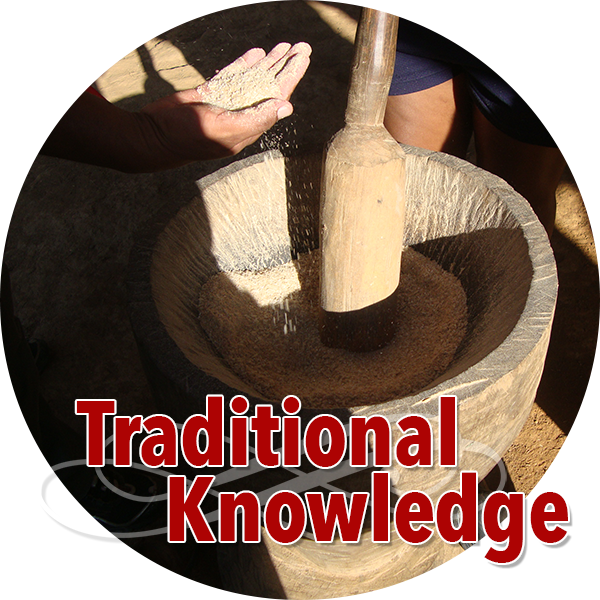|
Baseline
|
Indicator
|
Tools
|
|
a) Indigenous language(s):
- Languages Spoken in the community, [indigenous and non-indigenous)
- Status and range of professionals (including those as defined by their formal education and those that are experts on traditional knowledge e.g. Pastoralists, traditional healers, seers..etc) who have commend of the indigenous language
- Government and /or IP community program to promote and transmit indigenous language
- Legal recognition of indigenous languages by the state
|
- Increase or decrease in percentage of indigenous children who speak study in their mother tongue;
- Number of government and community programs that promote the use of indigenous language
- Existence of publication/literature material based in indigenous languages
- Decrease/increase in indigenous naming mechanism – of both nature and people
|
Use a guide questionnaires and conduct FGD
|
|
b) TK on Resources and territory management
- TK on resource management validated by scientific methodologies
|
- No. of TK on resource use recognized by policy and science
|
- comparative research on TK and Science on resource and territory management
|
|
c) Traditional Occupation:
- identification and listing of traditional occupations,
- number of people possessing skills disaggregated according to occupations
|
- Increase/decrease in number of indigenous livelihoods/ practices undertaken by the community ,
- percentage of the population engaged in traditional occupation
|
- case studies of traditional occupation: systems of production, consumption and distribution of products including the market system; customary sustainable use of resources associated to each traditional occupation
- Family portraits – using taking specific families as case studies and show how traditional occupations change or remain the same across generations
- Photovoice - giving communities access to camera to capture in photos traditional occupational activities they value most with a story to explain
|
|
d) Knowledge sharing/transfer:
- Existing Mechanisms for knowledge transfer (collective ceremonies, oral narrative, traditional songs, rites of passages)
- Laws/policies and programs recognizing, protecting and promoting TK and;
- Laws, policies and or programs discriminating or against TK protection and transmittal
|
- number/percentage of youth, women and elders participating in the transfer of knowledge
- number/percentage of mechanisms/ instruments recognizing traditional knowledge
|
Harvesting oral narratives, indigenous poems and songs still actively used as medium for knowledge transfer
|
|
e) Cultural Practices:
- Mutual Aid systems, values
- Traditional disaster Coping Mechanism
- Beliefs systems and associated rituals
- Ways of internal communication [within and outside]
- Traditional Expressions, performances songs, dances, symbols, designs, rituals
- Regulation between IP groups
|
Increase of decrease in:
- number of TK mechanism recognized, protected and promoted
- number of mechanisms /support systems to further developed innovated for TK promotion, protection and transmittal
- Traditional expressions developed and promoted
|
Use a guide questionnaires and conduct FGD
|

